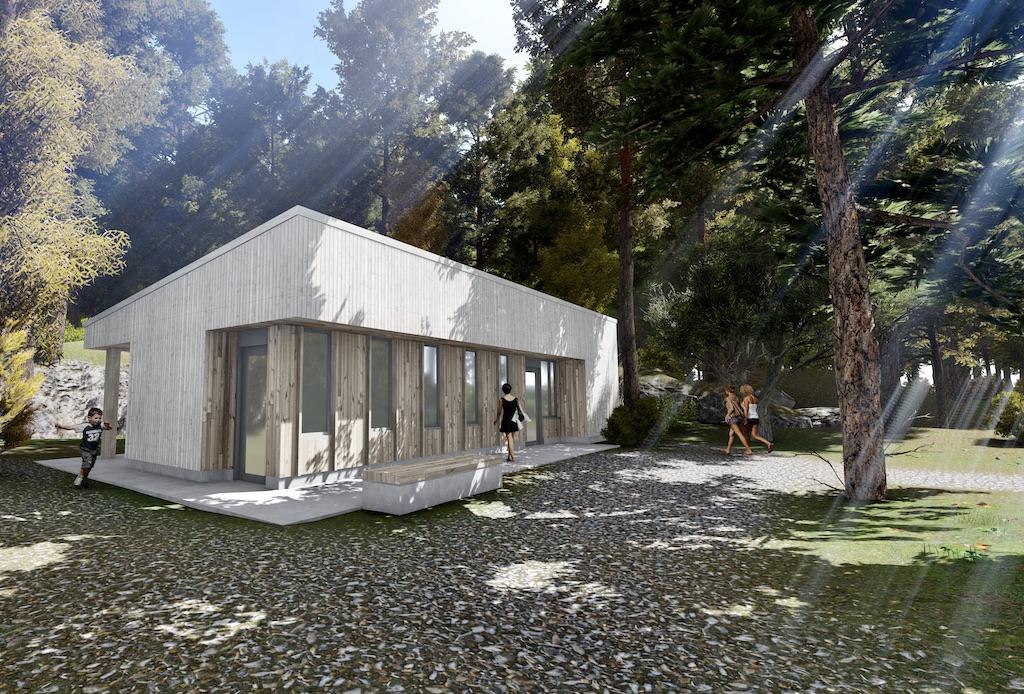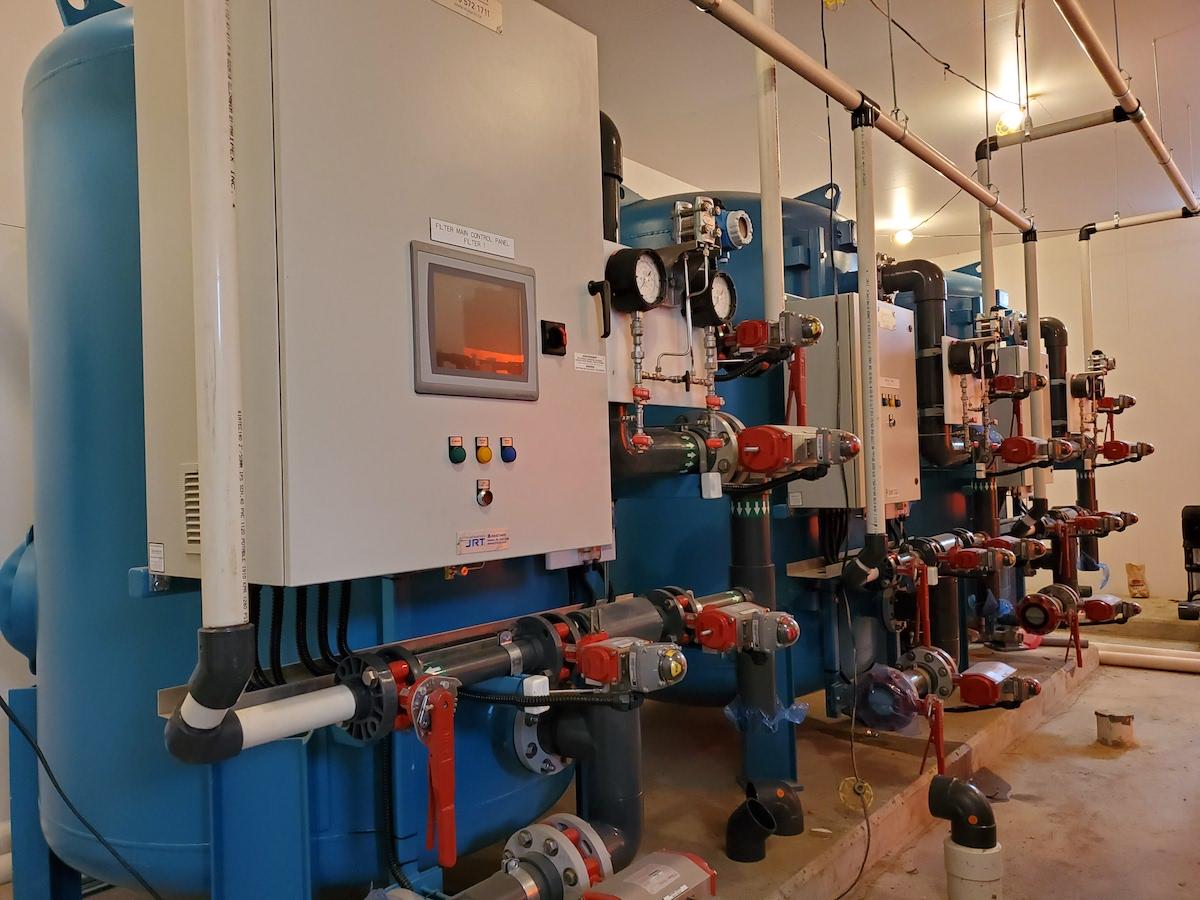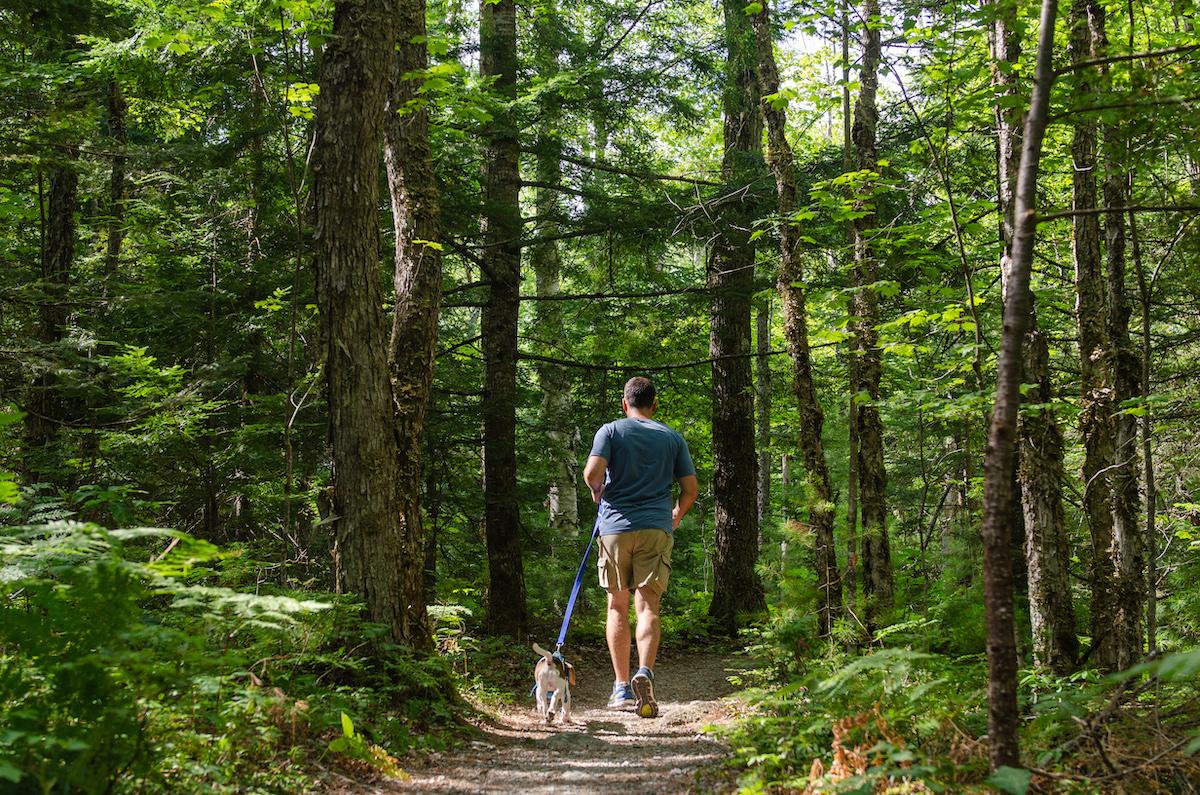
An artist's rendering of one of the new accessible and all-gender washrooms at Kejimkujik National Park and National Historic Site/Parks Canada
When 10 new washrooms open at a popular national park in Nova Scotia this May, it will be the first time Parks Canada can offer a fleet of all-gender and accessible options throughout an entire campground.
Each washroom building holds five private, gender-neutral bathrooms that have their own toilets, sinks, grooming areas, and lockable doors. One bathroom in each building is barrier free, and one is designated for families. Each building boasts three showers, including one that is barrier free.
“We want to be welcoming and open to a diverse population,” explains Sophie Borcoman, visitor experience manager for Kejimkujik National Park and National Historic Site. “We want to make sure these are the washrooms for the next generations and we want to make sure we get it right.”
The $8.3 million ($6.5 million USD) infrastructure project to replace 50-year-old toilets was so large, it forced Jeremy’s Bay Campground to close for the 2020 season. It includes a new wastewater management and water treatment facility that services people staying in the 344 front-country campsites. “When you think about what a full campground could look like with some 300 sites full on a July weekend, that’s of a lot of water moving through the system,” notes Borcoman.

Park visitors don't usually give much thought to wastewater management and water treatment facilities like this new one for Kejimkujik/Parks Canada
On top of a “much more efficient and greener” washroom experience, park officials landscaped around the new buildings with logs and mulch chips from Eastern hemlocks and other trees damaged by Hurricane Dorian in 2019 — something Borcoman called “wonderful recycling.”
Eastern hemlocks are the defining tree of the park, but they’re also under threat from the Hemlock Woolly Adelgid, an aphid-like insect. To reduce spread of the invasive species, Parks Canada launched a firewood importation ban and does phytosanitation (trimming branches to minimize contact with people, pets and vehicles) in the campground.
Kejimkujik — Nova Scotia’s first dark sky preserve — has an inland portion with rivers, barrens, rock-studded lakes and an Acadian forest, as well as a separate seaside portion with white-sand beaches and turquoise waters. It’s the only national park in Canada with dual status as a national historic site because for centuries the Mi’kmaw people used it as place of encampments, fish weirs, hunting territories, portages, trails and burial grounds, and it remains a culturally important place to them.
The park is about two hours south of Halifax and typically gets about 70,000 visitors a year, although that number dropped to 29,000 in 2020 during the pandemic and campground closure. It boasts a high visitor return rate of 85 percent, and draws multi-generation campers and grandparents who've introduced their children to the park and now are showing it off to their grandchildren. In recent years, it has seen a surge in urban visitors from Halifax, especially Canadians making their first national park visit. During the campground closure, people who always gravitated to the campground tried backcountry sites for the first time.

Kejimkujik's Eastern hemlocks are under threat from the Hemlock Woolly Adelgid/Parks Canada
For other camping and roofed accommodation, there are 46 backcountry sites as well as a yurt, cabins and a handful of oTENTiks with two barrier-free options.
Borcoman, who has been with Parks Canada for 31 years, says the 1908 book The Tent Dwellers by Albert Bigelow Paine, about inland Nova Scotia travels, really drew attention to the area. Camping had been on the decline until the agency began experimenting with roofed accommodations and people — namely urbanites, millennials, and new Canadians — embraced the fact they could come and camp while only bringing bedding and food.
As an added bonus to the infrastructure project, the new washroom buildings are heated, and so the park hopes to be able to keep them open longer. “There’s a number of just wonderful things that have come together that bring people here,” says Borcoman.
Camping reservations for Kejimkujik open April 23 and are slated to run May 21 to October 30.



Comments
Appears to be fairly forward thinking. Hopefully the NPS in the states can do as well.
As a frequesnt visitor to Keji I am happy to see these improvements. Considerable cost for sure , but a good investment for the park,